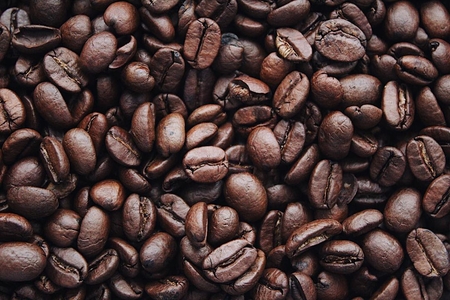CHOOSING THE BEST COFFEE BEANS THAT ARE RIGHT FOR YOU: HOW TO SELECT THEM AND WHAT YOU SHOULD KNOW
KNOW YOUR FLAVOURS
It makes sense to have a reasonable idea of what style and flavour of coffee beans you like before making a purchase. Just because a particular coffee bean is expensive or has been recommended to you by a friend or someone in the know. It doesn’t necessarily mean that it will be to your taste.
Each variety of coffee bean, including Arabica coffee beans, Robusta, Liberica, and Excelsa, boasts a distinct flavour profile and is ideally suited for specific brewing techniques. The processing and roasting of each type of coffee bean can also produce a diverse range of flavours, with washed coffee beans generally offering a more uniform taste than their naturally-processed counterparts. While lighter roasts tend to showcase more pronounced flavours than darker roasts, it's important to note that these guidelines should be viewed as flexible suggestions rather than strict rules.
For those of you that favour naturally sweet coffees with a light body and vibrant acidity, Arabica beans are the ideal choice as they are known for their distinct fruit, floral, nutty, and chocolate flavours. In contrast, for those who prefer their coffee with a heavier body and earthier, bittersweet notes, Robusta, Liberica, and Excelsa beans all make for great options. Alternatively, a blend of these varieties with Arabica beans can offer a well-rounded taste.
SHOULD I CHOOSE A SINGLE-ORIGIN OR A BLEND OF COFFEE BEANS?
This can be a complex area, so let's simplify things to make choosing one of these easier. If you prefer your coffee with milk, a blend is the best way to go. Blended coffee typically combines specific single-origin beans to create a balanced and intricate espresso with milk-based drinks in mind. The selected coffees are chosen to add body, notes of brown sugar, or floral complexity to balance the espresso.
On the other hand, if you drink black coffee, single-origin coffee is an excellent choice. Single-origin coffee comes from one known location, such as a farm or estate, allowing you to appreciate the unique nuances of a particular growing region. Drinking your coffee black allows you to savour and appreciate the subtle flavours without milk masking them on you.
That said, a single-origin coffee can work just as well with milk, and a blend can also be enjoyed as a black coffee. It all depends on the specific single-origin beans used in the blend.
EXPLORING THE EXTENSIVE RANGE OF COFFEE BEAN OPTIONS
When selecting a type of coffee, it's crucial to comprehend the various classifications of coffee bean options available. Coffee can be categorized in multiple ways, such as by variety, flavour profile, roast level, caffeine content, grind, brewing method, additives, and more.
It's important to have a basic understanding of each category when visiting a store or coffee shop to purchase coffee. This ensures that you select a coffee with a flavour you like that's also compatible with your coffee brewing equipment.
5 TIPS TO CHOOSE THE BEST COFFEE BEANS
CONSIDER THE SOURCE
Understanding the origin of your coffee beans can provide insight into the potential taste and assist you in identifying the countries or regions that produce the type of beans you prefer. Coffee is cultivated in over 50 countries, and a reputable producer should disclose the origin of their coffee beans. Research whether your desired flavour, acidity, and other preferences are common in coffees grown in those areas. Some popular coffee-growing locations include Indonesia, Ethiopia, Brazil, Kenya, Colombia, and Australia.
SAMPLE VARIOUS ROASTS
To begin your coffee selection, it's helpful to know your preferred blend, brand, and flavour, even if you're open to trying something new. You can start by selecting your preferred bean type from the two main coffee bean varieties: Robusta and Arabica. Robusta beans are grown at low altitudes and have a robust, bitter flavour. In contrast, Arabica beans are cultivated at higher elevations and have a smooth, acidic taste. Identifying your preferences can aid you in determining which type of coffee bean is best suited for you.
SELECT THE RIGHT BEANS FOR YOUR BREWING PREFERENCE
Your brewing preference should generally guide your choice of coffee beans. Blends are ideal for milky coffee drinks, while single-origin is preferable for black coffee. Single-origin coffees come from a specific growing location, such as a farm or estate, which highlights the unique flavour of that location. As a result, you're more likely to detect and appreciate the subtle flavour notes when you drink black coffee.
Blends, on the other hand, are a combination of different beans from different locations or parts of the world, producing a complex flavour that is perfect for milky coffee drinks like cappuccinos and lattes. However, it's worth noting that blends can also be enjoyed without milk, and single-origin coffee can be paired with milk if that's your preference. Ultimately, your taste and preferences should guide your decision.
DID THE BEANS COME FROM HIGH ALTITUDES
The altitude at which coffee is grown has a significant effect on the acidity and sweetness of the resulting beans. Coffee grows best in temperatures that average between 18°C to 23°C, and higher altitudes are often necessary to maintain these conditions. As a general rule, the higher the altitude of the coffee growing region, the greater the acidity and sweetness of the coffee. Look for coffee grown at elevations above 1500m, as these high-growth locations tend to produce beans with refined acidity and sweetness.
CHECK HOW THE COFFEE BEANS ARE PROCESSED
On coffee packaging (or menus), you'll often find the processing method of the coffee indicated as "washed or wet-processed" or "natural or unwashed." Wet-processed or washed coffee production involves removing the outer pulp of the cherry before fermenting, washing, and drying.
This process contributes to the coffee's excellent flavour clarity and bright, complex acidity. It is a popular method among coffee producers because the controlled fermentation process reduces defects. In contrast, the natural or unwashed process involves drying the coffee with its cherry intact throughout the drying process. This allows the sugars and fruit flesh to permeate the seed, resulting in a remarkable flavour.









